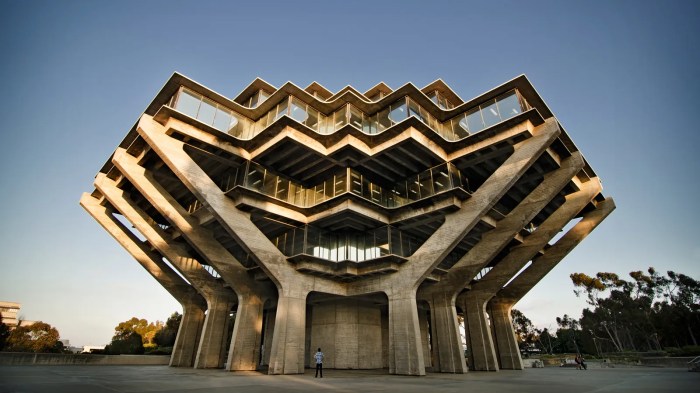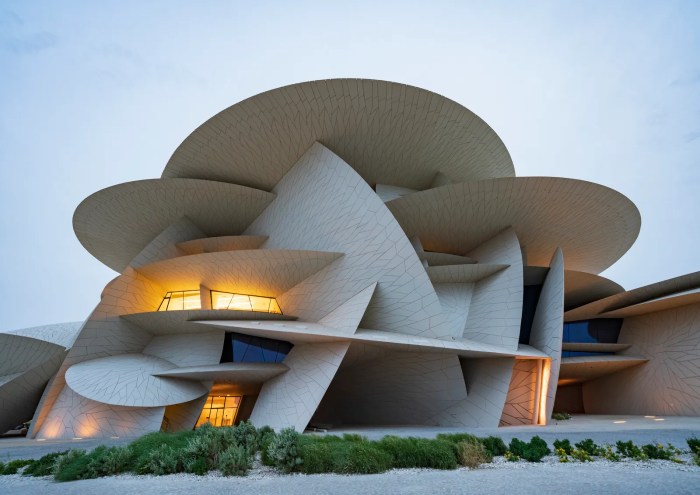Exploring the World of Architecture
As architecture takes center stage, this opening passage beckons readers into a world crafted with good knowledge, ensuring a reading experience that is both absorbing and distinctly original. From ancient wonders to modern marvels, the realm of architecture is a captivating journey through time and design.
Architecture is not just about buildings; it's a reflection of society, culture, and innovation. Let's delve into the intricate details that shape our built environment and inspire awe and wonder in our daily lives.
Definition and History

Architecture is the art and science of designing and constructing buildings and other physical structures. It plays a crucial role in shaping the way we experience and interact with our built environment, influencing our quality of life, culture, and identity.Throughout history, architecture has evolved in response to various cultural, social, political, and technological influences.
From the grand pyramids of ancient Egypt to the towering skyscrapers of modern cities, architectural styles have reflected the values and aspirations of different societies.
Ancient Architecture
In ancient civilizations such as Egypt, Greece, and Rome, architecture served as a symbol of power and prestige. Monumental structures like the Parthenon and the Colosseum showcased the architectural achievements of these societies, featuring intricate detailing and innovative construction techniques.
Medieval and Renaissance Architecture
During the Middle Ages and the Renaissance period, architecture saw a shift towards more ornate and decorative styles. Gothic cathedrals with soaring spires and intricate stained-glass windows exemplified the religious and artistic influences of the time. The Renaissance brought a revival of classical forms and proportions, as seen in the works of architects like Brunelleschi and Palladio.
Modern and Contemporary Architecture
The Industrial Revolution and advancements in materials and construction techniques paved the way for modern architecture. The 20th century saw the rise of movements like Art Deco, Modernism, and Postmodernism, each with its own unique approach to design and spatial organization.
Contemporary architecture continues to push boundaries with sustainable practices, innovative technologies, and experimental forms.
Architectural Elements
Architecture is a combination of various elements that come together to create beautiful and functional structures. These elements include form, space, light, and materials, each playing a crucial role in shaping the design of a building.
Form
Form in architecture refers to the overall shape and structure of a building. It involves the arrangement of different elements to create a cohesive and visually appealing design. The form of a building can evoke different emotions and convey specific meanings to its users.
Space
Space is another essential element in architecture, as it defines the functionality and usability of a building. Architects carefully consider the distribution of space within a structure to ensure that it meets the needs of its occupants while also creating a sense of openness or intimacy.
Light
Light plays a crucial role in architectural design, as it can dramatically affect the ambiance and atmosphere of a space. Architects use natural and artificial lighting to highlight key features, create focal points, and enhance the overall aesthetic of a building.
Materials
Materials are the building blocks of architecture, providing both structural support and visual appeal. Architects carefully select materials based on their durability, sustainability, and aesthetic qualities to bring their designs to life.
Color, Texture, and Structure
In architectural design, color, texture, and structure are used to add depth and character to a building. Color can evoke different moods, while texture can create visual interest and tactile experiences. Structure, on the other hand, ensures the stability and integrity of a building.
Balance, Proportion, and Scale
Achieving balance, proportion, and scale is essential in creating harmonious architectural compositions. Architects carefully consider the relationship between different elements to ensure that the overall design feels cohesive and visually pleasing to the eye.
Architectural Design Process

Architectural design is a complex process that involves several key steps from the initial concept to the final construction. Architects utilize various tools and techniques such as sketches, models, and computer-aided design (CAD) software to bring their ideas to life.
Additionally, they must consider factors like site analysis, building codes, and client requirements to make informed design decisions.
Conceptualization and Planning
Before any physical work begins, architects start by conceptualizing the design based on the client's needs and the site's characteristics. This stage involves brainstorming ideas, creating rough sketches, and developing a basic design concept.
Design Development
Once the initial concept is approved, architects move on to the design development phase. Here, they create detailed drawings, 3D models, and use CAD software to refine the design, incorporating structural elements, materials, and spatial arrangements.
Regulatory Compliance and Documentation
Architects must ensure that their designs comply with local building codes, zoning regulations, and other legal requirements. They also create detailed construction documents, including floor plans, elevations, and specifications, to guide the construction process.
Construction and Monitoring
During the construction phase, architects work closely with contractors to ensure that the design is implemented accurately. They may visit the site regularly to monitor progress, address any issues that arise, and make adjustments as needed to ensure the project's success.
Sustainable Architecture
Sustainable architecture focuses on creating buildings that are environmentally friendly and energy-efficient. Architects strive to design structures that have a minimal impact on the environment while promoting a healthy and sustainable lifestyle.
Strategies for Sustainable Architecture
Architects employ various strategies to reduce energy consumption, minimize waste, and utilize eco-friendly materials in their designs. Some common approaches include:
- Integrating renewable energy sources such as solar panels or wind turbines
- Designing buildings with natural ventilation and daylight to reduce the need for artificial lighting and cooling
- Using recycled and locally sourced materials to minimize carbon footprint
- Incorporating green roofs and living walls to improve insulation and reduce stormwater runoff
Examples of Innovative Sustainable Architectural Projects
There are numerous sustainable architectural projects around the world that showcase innovative design solutions. Some noteworthy examples include:
- The Bullitt Center in Seattle, known as the greenest commercial building in the world
- The Edge in Amsterdam, featuring a smart building design with energy-efficient systems
- Bosco Verticale in Milan, a pair of residential towers covered in greenery to improve air quality and biodiversity
- The Crystal in London, a sustainable exhibition center powered entirely by renewable energy sources
Iconic Buildings
Iconic buildings around the world have left a lasting impact on architecture, influencing design trends and shaping the skylines of cities. These structures are not only visually stunning but also hold significant cultural, social, and historical value.
Taj Mahal, India
The Taj Mahal is a masterpiece of Mughal architecture, known for its intricate marble work and symmetrical design. Built in the 17th century by Emperor Shah Jahan in memory of his wife, it stands as a symbol of eternal love and is considered one of the most beautiful buildings in the world.
Sydney Opera House, Australia
The Sydney Opera House is an iconic architectural marvel with its unique sail-like design. Designed by Danish architect Jørn Utzon, this cultural landmark has become a symbol of Australia and a UNESCO World Heritage Site. Its innovative construction challenged traditional building techniques and set new standards in architectural design.
Burj Khalifa, Dubai
The Burj Khalifa stands tall as the tallest building in the world, reaching a height of over 800 meters. Its sleek modern design and cutting-edge engineering make it a symbol of Dubai's rapid development and ambition. The skyscraper's futuristic aesthetic and innovative sustainability features have set new benchmarks for skyscraper design.
Last Point
In conclusion, architecture stands as a testament to human creativity and ingenuity, shaping our world in profound ways. From sustainable practices to iconic structures, the impact of architecture is undeniable. As we continue to admire and create architectural wonders, let's remember the artistry and vision that go into every structure we encounter.
Essential FAQs
What is the significance of architecture in society?
Architecture not only provides shelter but also shapes the way we live, work, and interact with our environment, reflecting cultural values and societal progress.
How do architects incorporate sustainable practices in their designs?
Architects integrate sustainable elements by using eco-friendly materials, reducing energy consumption, and implementing innovative waste management strategies.
What are some key architectural styles throughout history?
From Gothic to Modernism, architectural styles have evolved over time, each reflecting the artistic and cultural movements of its era.




